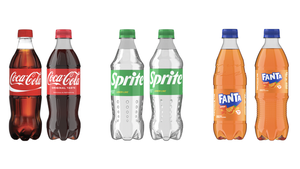Many industry participants anticipate a price correction as resin reactors continue to ramp up production, and at least one producer has officially lifted its force majeure on polypropylene. Meanwhile, Nova Chemical declared force majeure on polyethylene resins this week.
April 29, 2021

Although the polyethylene (PE) and polypropylene (PP) markets remain categorically under supplied, the spot resin market continues to act jittery at these historically high price levels, reports the PlasticsExchange in its Market Update. Many industry participants anticipate a price correction as resin reactors continue to ramp up production, and at least one producer has officially lifted its force majeure on PP; its contract allocations remain in place, however.
While off-grade supplies for both PE and PP have improved slightly in both quality and quantity, spot prime resins continue to be difficult to source. Those seeing discounted off-grade materials and expecting significantly cheaper and plentiful prime resins have been disappointed. Still, at times the rally feels a bit tired, notes the PlasticsExchange, and spot prices for most prime commodity grades eased a few cents this past week amid comparatively lackluster demand. Buyers, it seems, are hoping for lower prices ahead and limiting their purchases.
New price increase on April PE contracts
In the meantime, PE producers were able to leverage the exceedingly tight supply/demand dynamic to implement another $0.07/lb increase on April contracts, bringing the 2021 gain to $0.26/lb and a whopping $0.50/lb since June 2020. During these same periods, spot PE prices advanced well beyond contracts. Some of the spot premiums have started seeing some erosion while contracts continued to rise, shrinking the gap between the two. High-density PE (HDPE) resins, which had risen the sharpest in the aftermath of the mid-February storm, peeled off the most last week, dropping $0.03/lb. Low-density PE (LDPE) and linear-low-density PE (LLDPE) film grades eased a penny or two, while super sparsely supplied LDPE and LDPE injection grades generally held firm. These declines were attributed to softening sentiment rather than a substantial shift in supply, according to the PlasticsExchange.
The flow of fresh PP railcars remained predominantly wide spec, though a few prime PE cars, including HDPE for blow mold, were made available through trading partners’ forecasted orders. Those offers were immediately snatched up by buyers in need. Some prime export railcars started showing up, too, including HDPE Crate Grade and LLDPE Butene, as these plain-vanilla grades are easier to make than more complex materials, such as HDPE co-polymer and higher alpha-olefin film grades, for which the PlasticsExchange reports still only seeing off-grade materials. These limited incremental export offers were challenging to sell, as US resin prices remain higher compared with most other regions. Still, producer-direct export programs continued to hum along at a surprisingly rapid rate, soaking up more than a third of total North American PE sales, writes the PlasticsExchange.
Contract PP volumes remain restricted, sending buyers to spot market
While PP contracts have been declining the past two months, contract volumes remain restricted, sending buyers to the spot market to supplement supplies. After running up to levels in the vicinity of $1.50/lb, only some of the fluff in spot PP prices has deflated, and more so in homo-polymer than co-polymer, so prompt prime PP remains priced at a huge premium to contracts. While exports only comprise a small percentage of overall PP sales, even as supplies have been extremely tight, resin continues to sell offshore, but mostly rougher off-grade materials. On the other hand, large quantities of imported prime PP, targeting around 100 million lb per month, have been sailing into the United States since the fourth quarter. Shifts in regional trade patterns have created container and vessel shortages, however, complicating logistics and sending ocean freight rates soaring while international PP prices had rallied, all together shrinking the import incentive. This could help drag out the PP supply/demand imbalance longer than some had expected.
The new Plastic Possibilities podcast from PlasticsToday, "Resin Production Meets the Perfect Storm," is devoted to the impact of raw material shortages and rising prices in the US market. Supply-chain expert Ambrose Conroy, founder and CEO of business consultancy Seraph, shares insights on the forces buffeting the plastics resin market today and what we can expect to see in the weeks and months ahead. Listen to the 20-minute conversation here. |
The PlasticsExchange acknowledges in its weekly Market Update that initially it was more bullish than most and forecasted that spot price gains would endure longer than the consensus. Its analysts considered the change in consumer habits in the (post) pandemic environment, noting the development of a high level of inelastic demand, such as for vaccine syringes and masks made from PP and packaging supplies made from PE for online purchases. “We believed that processors of these types of products would be willing to pay up to chase limited resin offers and crowd out the weaker demand that would fall off as prices rose. Further, given the extreme tightness in resin supplies, and the complexity of restarting petrochemical/plastics production, there would be no room for error and every additional supply hiccup could impact pricing and extend the longevity of the rally. These feelings seem to be holding true and we continue to stand by this conviction,” writes the PlasticsExchange.
As production recovers and supplies increase, a continued gentle softening of prices can be anticipated. However, actors in the resin market should remain cautious in case potential, yet unknown disruptions come along and initiate another leg of the rally. While there is a little breathing room developing, there is also very little resin throughout each level of the supply chain, so the situation remains vulnerable. Oh, and there are also fresh price increases nominated for May contracts — a nickel each for PE and PP.
Nova Chemicals declares force majeure
S&P Global Platts reports that Nova Chemicals has declared force majeure on all its polyethylene resins produced in the Sarnia region of Ontario in Canada because of mechanical failure. Nova Chemicals made the announcement in an April 27 letter to customers, which was seen by S&P Global Platts.
The failure occurred at the company’s Corunna ethylene cracker, which supplies ethylene to its polyethylene facilities in the Sarnia region. The force majeure affects PE resins but does not impact Nova’s other PE products, said the letter.
Trouble also may be brewing at ExxonMobil’s refinery in Beaumont, TX, which could affect feedstock and resin supplies. The company has rejected a proposal from union workers to extend a three-year contract by an additional year, reports S&P Global Platts, and it has threatened to lock out workers starting May 1 unless the union accepts the proposal. Collective bargaining between ExxonMobil and the United Steelworkers has been ongoing since Jan. 11, 2021.
Read the full Market Update on the PlasticsExchange website.
About the Author(s)
You May Also Like


